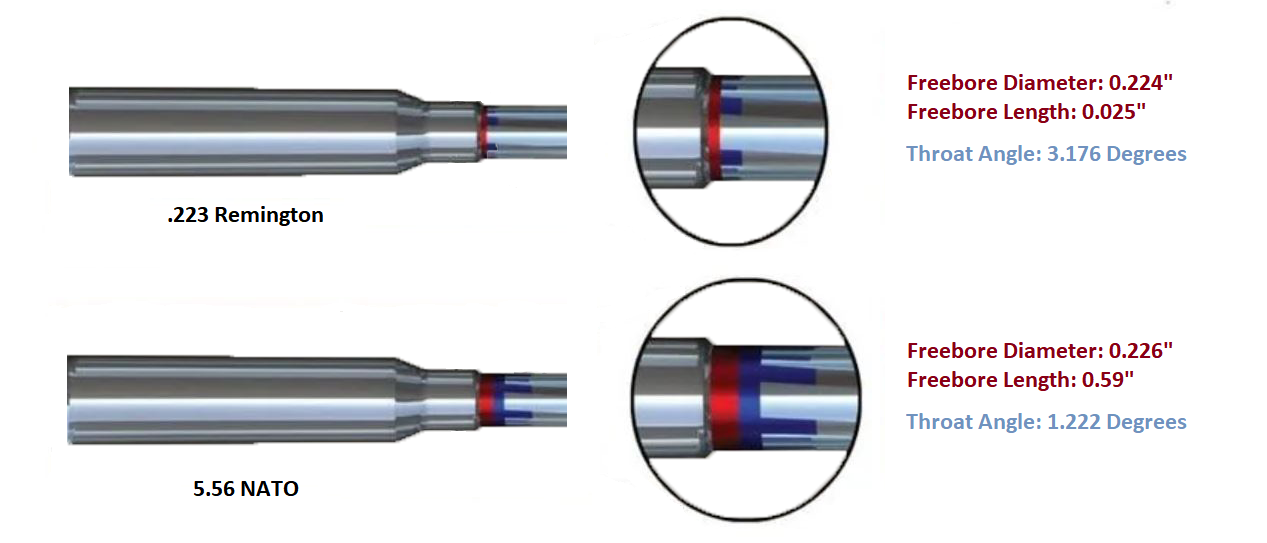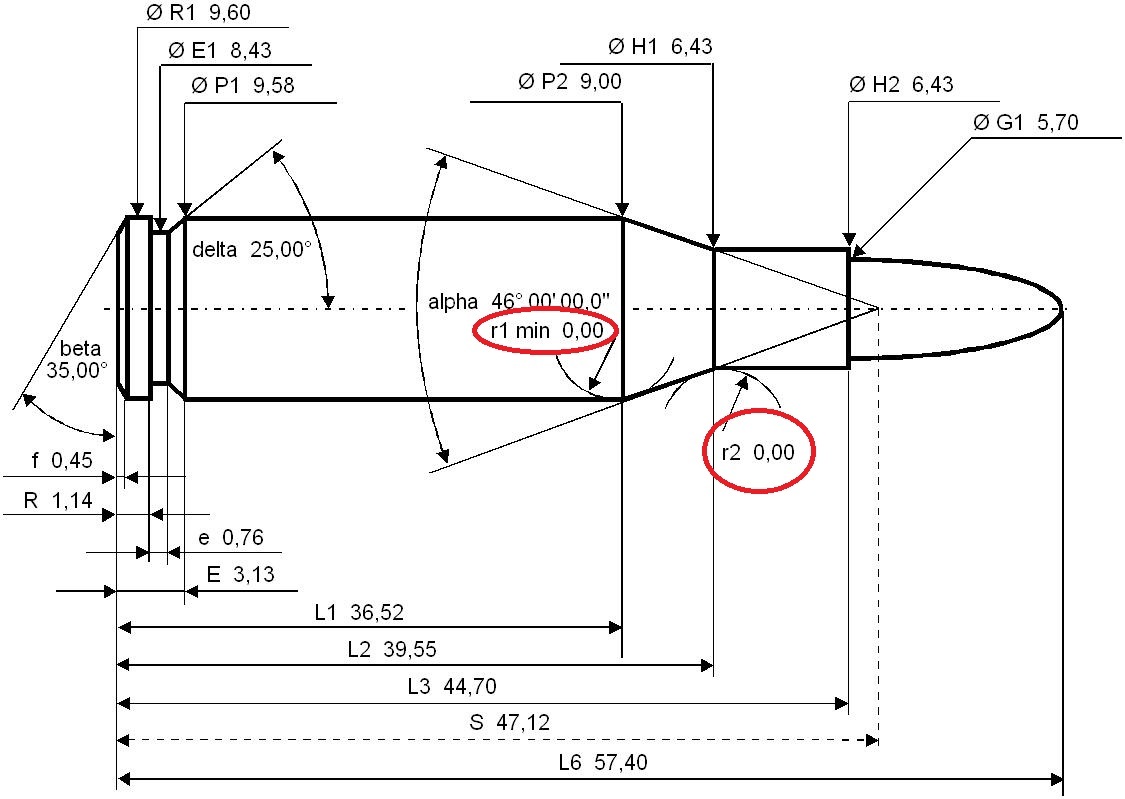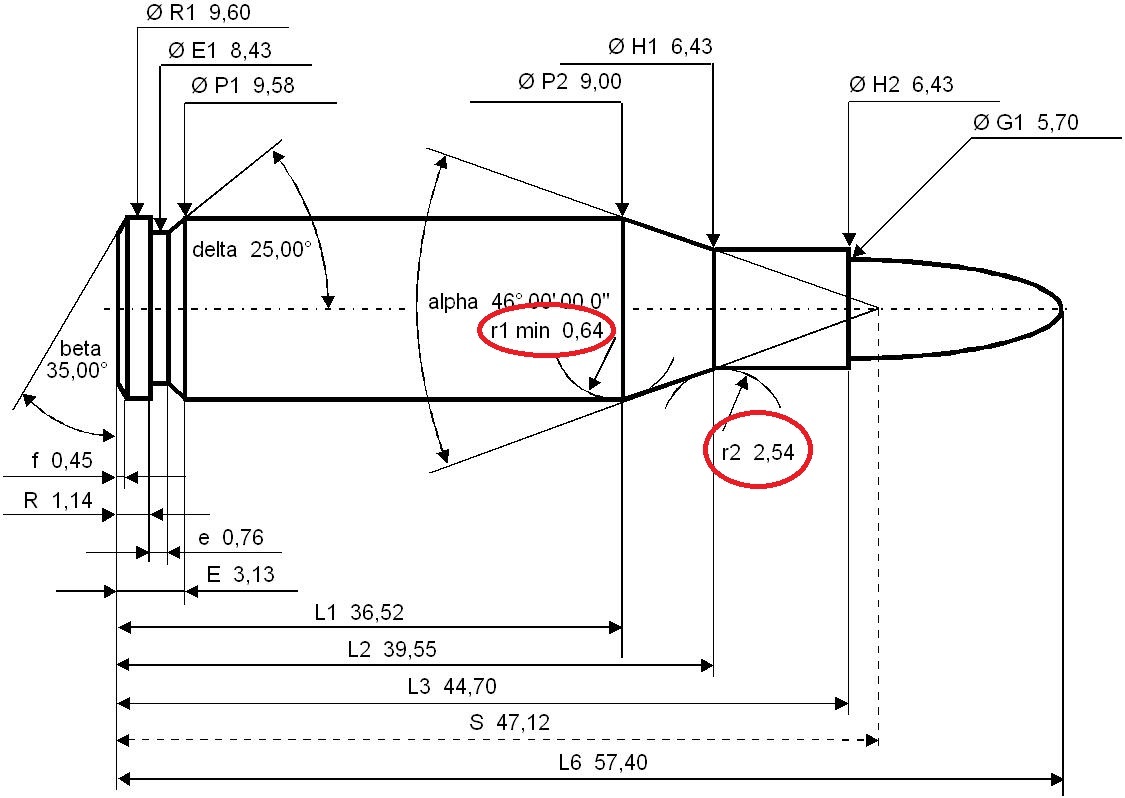5.56 NATO vs .223: The Real Differences, Explained (With Diagrams!)
Posted by 80-Lower.com on Jul 22nd 2024
There's one question every new AR-15 owner asks when buying ammo for the first time: Can you shoot 5.56 NATO in a .223 Remington gun? And is the opposite true: Can you shoot .223 Remington in a 5.56 rifle?
The most burning question of all, though, is: What are the real, verifiable differences between 5.56 and .223? We've got the definitive answers, with proof and diagrams, below.
5.56 NATO vs .223 Rem: What's Truly Different?
Yes: 5.56 and .223 are, indeed, truly different in three key ways.
1. 5.56 NATO has a higher chamber pressure than .223
Chamber pressure measures the force that a casing's outer walls exert on the inside of a firearm's chamber when the round is ignited. The Sporting Arms & Ammunition Manufacturers Institute, or SAAMI, measures chamber pressure in PSI for all commercially available firearm chambers. These are the chamber pressures for .223 and 5.56:
- .223 Remington produces a chamber pressure of 55,000 PSI.
- 5.56 NATO produces a higher chamber pressure of 62,000 PSI.
2. 5.56 NATO chambers have a longer throat than .223 chambers

The throat of the barrel is found between the mouth of the casing, and the beginning of the rifling in the barrel.
The 5.56 chamber has a shallower leade angle inside the throat, resulting in a longer throat. This longer throat accommodates the 5.56 NATO's higher chamber pressure and it allows the barrel to chamber physically larger bullets without risking over-pressurization.
3. 5.56 and .223 casings are different
Plenty of online sources claim 5.56 and .223 casings are identical, which is only half true. It is correct that both cartridges' cases have the same external dimensions, including having the same width, shoulder, neck, and length.
But the 5.56's case uses thicker brass, which reduces its internal volume. This reduced volume forces the case's powder into a tighter space which, when ignited, contributes to the round's higher chamber pressure.
5.56 NATO Casing Diagram

.223 Remington Casing Diagram

Diagrams courtesy F. Flinch
Above, we can see the angles that form the shoulder-to-neck transition are steeper on the 5.56 casing, which reduces its case capacity. The 5.56 casing only has a capacity of 25.8 grains (H2O), while the .223 casing has a capacity of 28.8 grains (H2O), which is approximately 1.2% greater.
5.56 NATO vs .223 Remington: What's The Same?
Beyond the differences shown above (chamber pressure, throat length, and casing dimensions), 5.56 NATO and .223 Remington are identical. There are plenty of falsehoods claiming yet more differences between these rounds. Let's cover what things these two cartridges share, and bust some myths in the process.
Both rounds use the same gunpowder
Contrary to popular belief, 5.56 is not loaded with more powder than .223. It is only the case's lesser volume that produces greater chamber pressure. Both 5.56 and .223 are loaded with the same amount and type of powder.
We can even compare load data confirming this. Referencing Nosler's load data for 69/70-grain .223 and 69/70-grain 5.56, we can see that, across the board, the amount of powder (in grains) is the same. For example, both rounds will require 24.5 grains of RL15 powder, 25.5 grains of N540 powder, or 25 grains of Varget powder to obtain their nominal velocities.
Both rounds use the same bullets (usually)
Although some claim 5.56 is more powerful because it fires a different bullet, this is not universally true. Commercial 5.56 and .223 ammo is often loaded with the same bullets, with 55-grain rounds being the most common. Although 5.56 NATO now also chambers Mk. 262 (77-grain) bullets, .223 Remington also offers 77-grain options, providing nearly identical performance.
The only truly different bullets that are found exclusively on 5.56 NATO casings are M855 (62-grain steel core, known as "green tip"), M196 (55-grain tracer), M856 (62-grain tracer), and M862 (short-range training ammo, or "SRTA").
5.56 and .223 bolts and receivers are the same
In spite of 5.56's higher chamber pressures, there are no differences in materials, dimensions, nor construction when it comes to the rifle's bolts or upper and lower receivers. When either round is chambered in the AR-15 platform, the bolt carrier groups used for both cartridges are identical, as are the upper and lower receivers.
Optimal twist rates are identical
Despite 5.56 NATO producing slightly higher muzzle velocities, the optimal twist rates for 5.56 and .223 are identical. For example, a 62-grain load will perform best with a 1:8 twist rate, regardless of whether it's being fired from a 5.56 or .223 casing and barrel.
5.56 NATO vs .223 Rem: FAQ
Now we know the real differences and similarities between 5.56 and .223, so we can answer those common questions up above.
"Can I shoot .223 in a 5.56 gun?"
Yes. Because .223 Remington produces lower chamber pressures, it's perfectly safe to chamber this round in any 5.56-chambered rifle. It should be noted that, because of the 5.56 chamber's longer throat, you may notice a slight reduction in accuracy and muzzle velocity.
"Can I shoot 5.56 in a .223 gun?"
No. We do not recommend firing 5.56 NATO rounds in a barrel chambered in .223 Remington. The 5.56's higher chamber pressure, coupled with the .223 chamber's shorter throat, will result in over-pressurization of the barrel.
This over-pressurization can contribute to increased wear on the barrel's rifling, and throat, and it will produce extra wear on bolt lugs. Your casings may suffer pierced or popped primers. You may also notice increased felt recoil and increased fouling in gas-operated semiautomatic rifles like the AR-15.
Want to chamber safely both rounds in a single rifle with maximum accuracy? You should consider a .223 Wylde chamber, which can safely chamber both 5.56 NATO and .223 Remington. Learn more about it here.
Quick Recap
Overwhelmed by the facts and charts? Here are the most important takeaways:
- 5.56 NATO operates at a higher pressure than .223 Remington.
- 5.56 NATO barrels' throat are longer than .223 chamber throats.
- 5.56 and .223 casings are identical when comparing exterior dimensions.
- 5.56 casings have steeper shoulders, resulting in reduced case capacity.
- The .223 Remington can be safely fired from a 5.56-chambered barrel.
- The 5.56 NATO cartridge should not be fired from a .223-chambered barrel.
DISCLAIMER: If you are new to the world of DIY gun building, you likely have a lot of questions and rightfully so. It’s an area that has a lot of questions that, without the correct answers, could have some serious implications. At GunBuilders.com, we are by no means providing this content on our website to serve as legal advice or legal counsel. We encourage each and every builder to perform their own research around their respective State laws as well as educating themselves on the Federal laws. When performing your own research, please be sure that you are getting your information from a reliable source.

